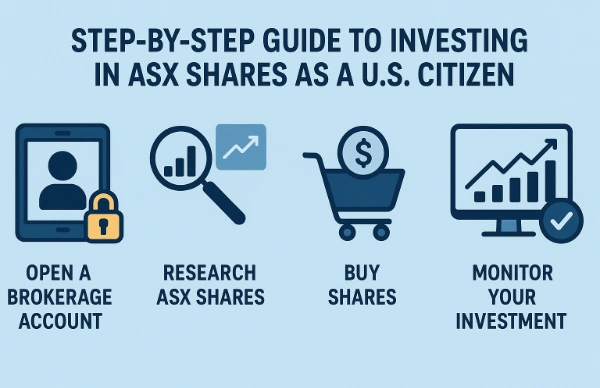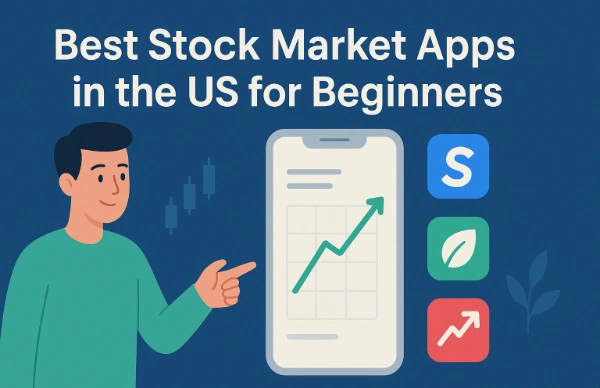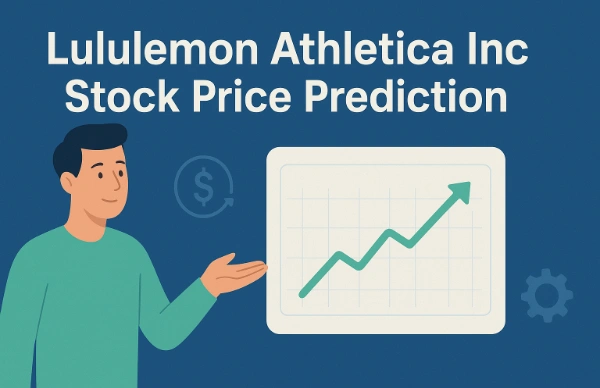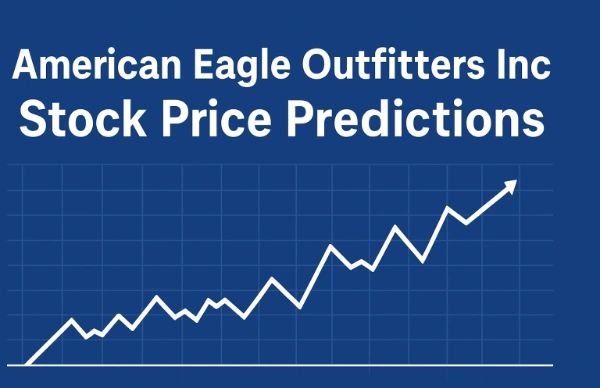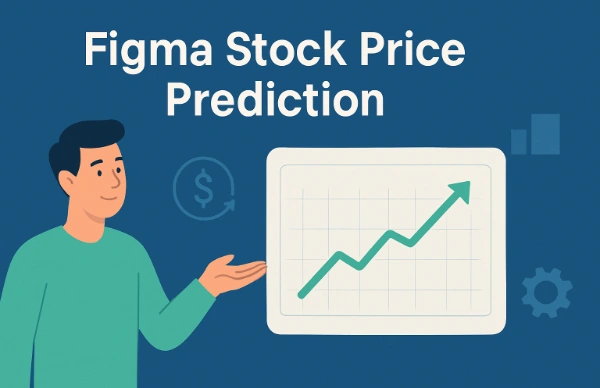Introduction
Global investing isn’t just for the ultra-wealthy anymore. Thanks to modern brokerage platforms and international access, even everyday U.S. investors can diversify beyond Wall Street. One of the most attractive markets outside the U.S. is the Australian Securities Exchange (ASX)—a hub for mining powerhouses, top-tier banks, biotech innovators, and growing tech firms.
Why should an American care about a stock exchange 9,000 miles away? Simple: diversification, stability, and opportunity. The U.S. stock market is huge, but it doesn’t give you enough exposure to commodities like iron ore, lithium, or copper—the very materials powering the electric vehicle and renewable energy revolutions. Australia, on the other hand, is a global leader in these resources.
Moreover, the ASX has a unique dividend culture. Many Australian companies regularly pay out high dividend yields, often above what you’d find in U.S. markets. While Americans don’t benefit from Australia’s franking credits, the strong payout tradition still appeals to income-focused investors.
On top of that, Australia’s economy has shown remarkable resilience and stability, avoiding recession for nearly three decades until the COVID-19 pandemic. The combination of strong institutions, abundant natural resources, and close ties with Asian economies—especially China—makes it an attractive market for U.S. investors.
This guide will break down everything you need to know: how the ASX works, why you should invest, tax and legal considerations, the account setup process, and strategies to manage risk while maximizing returns. By the end, you’ll have a clear step-by-step roadmap to confidently start investing in ASX shares as a U.S. citizen.
Table of Contents
Understanding the Australian Securities Exchange (ASX)

The ASX is the beating heart of Australia’s financial system. Established in 1987 from the merger of six state-based exchanges, it has grown into one of the largest and most dynamic stock markets in the Asia-Pacific region. With more than 2,200 listed entities and a market capitalization exceeding AUD $2 trillion, the ASX consistently ranks among the world’s top 20 stock exchanges.
Trading hours run from 10:00 AM to 4:00 PM AEST, Monday to Friday. For Americans, this means overnight trading. For example, when the ASX opens at 10 AM Sydney time, it’s 8 PM the previous evening in New York. This time difference can be both a challenge and an advantage—news that breaks in the U.S. afternoon often impacts ASX trading immediately after.
Unlike U.S. ticker symbols, ASX companies use three-letter codes. For instance, Commonwealth Bank of Australia trades as CBA.AX on international platforms. Major sectors include:
- Financials (banks dominate, with the “Big Four”: CBA, NAB, ANZ, and Westpac)
- Materials (mining giants like BHP and Rio Tinto)
- Healthcare (CSL, a global leader in biotech)
- Technology (emerging but growing, with fintechs and software companies)
The ASX also reflects Australia’s resource-driven economy. Commodity demand—especially from China and Asia—heavily influences stock performance. This makes ASX investments particularly useful for U.S. investors seeking exposure to global growth trends not fully captured by American companies.
Why U.S. Citizens Should Consider ASX Investments
If you already own U.S. stocks, you may wonder: Why bother with the ASX? The answer comes down to diversification, income potential, and access to industries underrepresented in the U.S. market.
- Diversification Beyond Wall Street
The S&P 500 is heavily weighted toward tech giants. While these companies are powerful growth drivers, they don’t give you much exposure to commodities or Asia-Pacific trade. The ASX fills this gap with world-class mining, energy, and agricultural companies. - Australia’s Economic Resilience
Australia has one of the most stable economies globally. Strong governance, a robust banking system, and strategic trade links with Asia give investors confidence. Even during global downturns, Australia often weathers storms better than peers. - Attractive Dividend Culture
Australians love dividends, and many ASX companies pay them generously. U.S. investors won’t benefit from franking credits, but yields of 4–6% are common, especially among banks and utilities. - Currency Diversification
By holding Australian-dollar-denominated assets, Americans hedge against U.S. dollar weakness. Since the Australian dollar often rises with commodity prices, it adds another layer of diversification. - Unique Investment Opportunities
Where else can you buy shares in BHP, the world’s largest mining company, or CSL, a global biotech leader? These companies give U.S. investors exposure to growth stories not available domestically.
In short, ASX shares can add balance, income, and growth potential to an American portfolio in ways U.S. markets alone cannot.
Legal and Tax Considerations for U.S. Investors
Before you dive into ASX stocks, you need to understand the legal and tax framework. As a U.S. citizen, the IRS expects you to report all income worldwide—including dividends and capital gains from foreign shares.
Key points to remember:
- IRS Form 8938 (FATCA Reporting): If your foreign assets exceed $50,000 (single) or $100,000 (married), you must file Form 8938.
- FBAR (FinCEN Form 114): If the combined balance of your foreign accounts exceeds $10,000 at any time during the year, you must file an FBAR.
- Dividend Withholding Tax: Australia withholds 30% of dividends for non-residents. Fortunately, the U.S.-Australia tax treaty reduces this to 15%. You can claim this as a foreign tax credit on your U.S. return to avoid double taxation.
- Capital Gains Tax: Gains from ASX investments are taxed in the U.S. under normal capital gains rules (short-term vs long-term). Australia generally does not tax non-residents on capital gains unless the asset is “taxable Australian property.”
- Currency Impact: Since your returns are measured in USD, fluctuations in the AUD/USD exchange rate can affect not just profits but also your tax calculations.
Ignoring these rules can lead to IRS penalties, so it’s smart to consult a tax advisor familiar with international investing.
Setting Up Your Investment Account
To buy ASX shares, you’ll need the right brokerage platform. Luckily, U.S. investors have multiple pathways:
- International Brokers with Direct ASX Access
- Interactive Brokers (IBKR): Best choice for most U.S. investors. Low commissions (~$6 AUD per trade), real-time data, multicurrency accounts.
- Charles Schwab International: Good for wealthier investors; excellent service but higher minimums.
- TD Ameritrade: Offers access through its international desk but with higher fees.
- Australian Brokers Accepting U.S. Clients
- Some brokers like CMC Markets and IG Australia have historically accepted U.S. investors, though regulatory hurdles mean availability changes.
- ETF and ADR Alternatives
- ETFs: The iShares MSCI Australia ETF (EWA) provides instant exposure to large-cap ASX companies—trading on U.S. exchanges in USD.
- ADRs: Some Australian giants like BHP, Rio Tinto, and Westpac trade directly on U.S. exchanges as ADRs, making them the easiest entry point.
Account Opening Process
Opening an international brokerage account isn’t as quick as signing up for a U.S.-only platform like Robinhood or Fidelity. Since you’ll be dealing with overseas securities, regulators require more documentation to verify your identity, financial background, and tax status. Think of it as passing through an extra security checkpoint before boarding an international flight—it takes longer, but it ensures compliance on both ends.
Here’s what you’ll typically need to provide when applying for an account that lets you buy ASX shares:
- Proof of Identity – A valid U.S. passport or driver’s license is essential. Some brokers may ask for a notarized copy.
- Social Security Number (SSN) – Required for U.S. tax reporting.
- Proof of Address – A utility bill, lease agreement, or recent bank statement showing your current residence.
- Employment and Financial Details – Information about your employer, annual income, net worth, and investment experience.
- W-9 Form – Standard IRS form for tax purposes when dealing with non-U.S. institutions.
Once submitted, account verification can take anywhere from a few days to a couple of weeks, depending on the broker. Some Australian brokers are more stringent with U.S. citizens due to FATCA regulations, while large international brokers like Interactive Brokers have smoother onboarding processes.
After approval, you’ll need to fund your account. Most brokers prefer international wire transfers. Keep in mind, your funds will likely need to be converted into Australian dollars (AUD) before trading. This is where you’ll want to pay close attention to currency conversion fees, as some brokers charge wide spreads that can eat into your returns.
Pro tip: If your broker allows a multi-currency account, you can hold USD and AUD separately, giving you more flexibility to time conversions when exchange rates are favorable. This approach is especially useful for long-term investors who want to gradually build an AUD balance rather than converting everything at once.
Research and Analysis Tools
Buying a stock blindly is like stepping into a dark room without a flashlight—you don’t know what you’re getting into. That’s why proper research is critical when investing in ASX shares. Luckily, U.S. investors have access to a mix of free and paid tools to make smart decisions.
Free Platforms
- Yahoo Finance & Google Finance: Provide basic data, price history, and financial statements for ASX companies.
- ASX Official Website: Offers company announcements, filings, and educational resources. Since all ASX-listed companies must disclose material events here, it’s a goldmine of raw, unfiltered information.
Premium Platforms
- Morningstar: Well-regarded for in-depth equity research, ratings, and fair value analysis on many Australian stocks.
- Bloomberg & Refinitiv: Professional-grade tools with comprehensive market data, but costly—better suited for advanced investors.
- CommSec Research: Reports and commentary from one of Australia’s biggest retail brokers, often providing local insights U.S.-based analysts might overlook.
Australian Media Sources
- Australian Financial Review (AFR) and The Australian: Both provide excellent coverage of corporate developments and economic trends, though much of their content is paywalled.
- Livewire Markets: A popular online hub for Australian investment commentary and stock ideas.
When analyzing ASX stocks, consider factors unique to the region. For example, mining companies are highly sensitive to commodity prices, while banks are heavily influenced by Australian housing market conditions and regulatory changes. Also, many ASX-listed firms have significant business ties to Asia—particularly China—so regional economic shifts play a bigger role than they might for U.S. stocks.
In short, use a mix of global tools and Australian-specific resources. This balanced approach helps you spot opportunities that might otherwise go unnoticed by U.S.-only investors.
Currency Exchange and Conversion

Here’s where things get interesting—and sometimes tricky—for U.S. investors: currency risk. When you buy ASX shares, you’re not just betting on the stock’s performance—you’re also betting on the AUD/USD exchange rate.
Let’s break it down with a simple example:
- Suppose you invest $10,000 USD in ASX shares.
- At the time of purchase, $1 USD = $1.50 AUD, so you end up with AUD $15,000 to invest.
- If your stock rises 10% to AUD $16,500, you’ve made a nice gain in Australian terms.
- But if, during that same period, the AUD weakens to $1 USD = $1.70 AUD, your AUD $16,500 converts back to only ~$9,705 USD. Your stock gained value, but you still lost money due to currency depreciation.
This dual-layered risk means smart investors must manage currency exposure carefully.
Strategies to Manage Currency Risk
- Use Multi-Currency Accounts: Convert USD to AUD when rates are favorable and hold AUD until you’re ready to invest.
- Dollar-Cost Averaging Conversions: Instead of converting one large sum, spread conversions over time to smooth out exchange rate fluctuations.
- Currency-Hedged ETFs: Some ETFs that track Australian markets are hedged against USD, eliminating currency volatility (though at an additional cost).
- Accept the Risk: Many long-term investors simply accept currency exposure as part of the diversification benefit. After all, if the U.S. dollar weakens, your AUD-denominated investments could help offset losses in your domestic portfolio.
Bottom line: currency swings can amplify or erode your returns. It’s an unavoidable part of international investing, but with the right strategies, you can manage it rather than fear it.
Trading Hours and Market Dynamics
Investing in ASX shares comes with a unique challenge for U.S. investors: time zones. The ASX operates from 10:00 AM to 4:00 PM AEST (Australian Eastern Standard Time), which equates to 8:00 PM to 2:00 AM EST (or 5:00 PM to 11:00 PM PST).
This means that for Americans, ASX trading happens overnight. Some investors see this as inconvenient, but others appreciate the ability to trade after U.S. markets close. In fact, ASX often reacts directly to U.S. news releases that occur in the American afternoon—making it a “night shift” extension of your investment day.
Market Liquidity and Structure
- Large-cap companies like BHP, CSL, and Commonwealth Bank enjoy high liquidity, so U.S. investors can typically execute trades smoothly.
- Small-cap stocks, however, often have lower trading volumes, leading to wider bid-ask spreads. This makes limit orders especially important.
- Unlike the U.S., the ASX has limited after-hours trading, meaning most liquidity is concentrated during the official 6-hour window.
Trading Tips for U.S. Investors
- Plan Ahead – Place limit orders before going to bed. This way, your trades execute when the market opens in Sydney without requiring you to stay awake.
- Watch U.S. Market Closes – Since ASX opens shortly after U.S. markets close, American economic reports and earnings announcements often ripple into the next day’s ASX session.
- Be Mindful of Holidays – Australia has different market holidays, so always check the ASX calendar before placing trades.
Yes, the time difference can be inconvenient, but with the right strategy, you can turn it into an advantage—allowing you to monitor U.S. news in the evening and act accordingly when the ASX opens just hours later.
Top 10 ASX Shares for U.S. Investors
To make sense of the Australian market, it helps to start with the heavyweights—the companies that dominate trading and have global reach. Below is a snapshot of the Top 10 ASX-listed companies that are especially appealing for U.S. investors:
| Rank | Company | Code | Sector | Market Cap (AUD) | Dividend Yield | Why It’s Attractive |
|---|---|---|---|---|---|---|
| 1 | BHP Group | BHP | Materials | ~180B | 6.5% | World’s largest mining company, diversified commodities |
| 2 | Commonwealth Bank | CBA | Financials | ~170B | 4.2% | Australia’s largest bank, stable dividends |
| 3 | CSL Limited | CSL | Healthcare | ~140B | 1.8% | Global biotech leader in plasma therapies |
| 4 | Westpac Banking | WBC | Financials | ~85B | 5.8% | Major bank with regional expansion |
| 5 | ANZ Group | ANZ | Financials | ~75B | 6.1% | Significant presence in Asia |
| 6 | National Australia Bank | NAB | Financials | ~70B | 5.5% | Focus on business banking |
| 7 | Woolworths Group | WOW | Consumer Staples | ~45B | 3.2% | Dominant supermarket chain |
| 8 | Telstra Corp | TLS | Telecom | ~35B | 4.8% | Largest telecom provider in Australia |
| 9 | Rio Tinto | RIO | Materials | ~130B | 7.2% | Global mining giant, iron ore and copper |
| 10 | Macquarie Group | MQG | Financials | ~80B | 4.1% | Global investment bank with strong asset management arm |
Standout Picks for U.S. Investors:
- BHP Group (BHP): A diversified resources giant, giving exposure to global commodity cycles. Great hedge against inflation.
- Commonwealth Bank (CBA): Part of Australia’s “Big Four” banking oligopoly, offering stable returns and reliable dividends.
- CSL Limited (CSL): A true growth stock in healthcare with global scale—similar to Amgen or Pfizer in impact.
ETFs and Mutual Funds on the ASX

Not everyone wants to dive headfirst into picking individual stocks—especially in a market halfway across the world. That’s where ETFs (Exchange-Traded Funds) and mutual funds listed on the ASX can be a game-changer for U.S. investors.
Think of ETFs as a “basket” of stocks wrapped into a single trade. Instead of researching 20 Australian companies, you can own them all in one ticker. For U.S. investors, this is often the most efficient way to get broad exposure to the Australian market without dealing with the risks of single-stock volatility.
Some of the most popular ASX-listed ETFs include:
- VAS (Vanguard Australian Shares Index ETF) – Tracks the S&P/ASX 300, giving exposure to the top 300 companies in Australia.
- IOZ (iShares Core S&P/ASX 200 ETF) – Tracks the 200 largest Australian companies, heavily weighted toward financials and mining.
- A200 (BetaShares Australia 200 ETF) – A low-cost option for broad market exposure.
- QRE (BetaShares Resources Sector ETF) – Targets mining and energy companies, a big slice of Australia’s economy.
- IXI (iShares Global Consumer Staples ETF) – Though global, it includes Australian consumer staples exposure.
On the mutual fund side, U.S. investors often face more hurdles since many Australian mutual funds don’t accept non-resident investors. However, U.S.-based mutual funds (like those managed by Vanguard or Fidelity) sometimes include Australian equities as part of their international funds.
Why ETFs on the ASX might be appealing:
- Diversification – Instant exposure to multiple sectors.
- Lower Costs – Many ETFs have management fees as low as 0.10–0.15%.
- Ease of Access – Easier to trade than opening separate positions in multiple companies.
- Currency Benefits – Some ETFs are available in hedged and unhedged versions, letting you control exposure to the AUD/USD.
For beginners, ETFs are like training wheels for international investing—low risk, broad exposure, and far less hassle than handpicking stocks.
Dividend Yields and Tax Implications
One of the biggest attractions of ASX stocks is their generous dividend yields. In fact, Australian companies are known for paying out a larger share of profits to shareholders compared to U.S. firms. It’s not uncommon to find blue-chip ASX stocks yielding 4–6% annually, while U.S. equivalents might offer only 2–3%.
But there’s more: Australia has a unique system called franking credits. This is essentially a tax credit passed on to shareholders because Australian companies already pay corporate tax on their profits. For Australian residents, franking credits reduce double taxation, making dividends highly attractive. Unfortunately, U.S. investors don’t get the same benefit, but it still makes ASX dividends competitive compared to U.S. yields.
Now let’s talk taxes. U.S. investors in Australian shares face a withholding tax of 15% on dividends under the U.S.–Australia tax treaty. The good news? This amount is usually creditable against your U.S. tax bill. In other words, you won’t be taxed twice as long as you report it correctly on your IRS return.
Here’s a simple example:
- You own $10,000 worth of an ASX stock yielding 5% annually.
- That’s AUD $500 (roughly USD $330) in dividends.
- Australia withholds 15% (~$50), leaving you with $280 net.
- On your U.S. tax return, you can claim a foreign tax credit for the $50 withheld, reducing your IRS liability.
Key considerations for U.S. investors:
- Franking credits don’t apply – but dividends are still generous.
- Reinvesting dividends – Many ASX companies offer DRPs (Dividend Reinvestment Plans), which let you automatically reinvest dividends into new shares.
- Capital gains tax – You’ll owe U.S. taxes on gains when selling, just as you would with U.S. stocks.
Bottom line: ASX stocks can be income powerhouses for U.S. investors, provided you plan for the tax implications and use foreign tax credits wisely.
Risks and Challenges of Investing in ASX Shares
Let’s be real—international investing isn’t all sunshine and high dividends. Like any market, the ASX comes with its own set of risks and challenges that U.S. investors need to understand before diving in.
- Currency Volatility – As discussed earlier, AUD/USD swings can either boost or erode your returns. Even if a stock performs well locally, a weaker AUD can wipe out your gains when converting back to USD.
- Sector Concentration – The ASX is dominated by financials and resources. That means banks and mining companies often dictate overall market performance. If you want exposure to cutting-edge tech or biotech, the U.S. market is far deeper.
- Regulatory Differences – Corporate governance standards are high, but accounting rules, disclosure requirements, and legal systems differ from the U.S. If you’re used to U.S. SEC filings, you’ll need to get familiar with ASX announcements.
- Liquidity Risks – While big names like BHP or CBA trade heavily, smaller ASX stocks often have low liquidity. This can make it hard to enter or exit positions without moving the price.
- Geopolitical Exposure – Australia is closely tied to Asia, particularly China. A slowdown in Chinese demand for commodities can have an outsized impact on Australian exports and stock prices.
- Time Zone Inconvenience – U.S. investors may find it inconvenient to trade live during ASX hours.
So, how do you mitigate these risks?
- Diversify – Don’t over-concentrate in one sector. Balance resources, banks, healthcare, and consumer stocks.
- Use ETFs – They reduce single-stock risk and help smooth volatility.
- Stay Updated – Follow Australian financial news and global macroeconomic trends.
- Have Patience – Long-term investing reduces the short-term impact of currency swings.
In short, the risks are real, but so are the rewards. The key is recognizing that the ASX complements the U.S. market, rather than competing with it directly.
Strategies for Long-Term Investors
If you’re a long-term investor looking at ASX shares, you need a game plan that balances opportunity with risk. Unlike day trading, long-term investing in a foreign market is more about patience and discipline than quick wins.
1. Focus on Dividend Aristocrats
Australian companies like Commonwealth Bank, Wesfarmers, and Woolworths have a strong history of paying consistent dividends. Long-term investors benefit from reinvestment and compounding over time.
2. Think Sector Rotation
The Australian market is cyclical. Mining booms come and go, while banks remain steady but exposed to housing market risks. Long-term investors should be ready to rotate between sectors depending on macroeconomic conditions.
3. Hedge or Embrace Currency Risk
Some investors use hedged ETFs to minimize currency fluctuations. Others see currency risk as a diversification benefit. If you believe the U.S. dollar will weaken over the next decade, holding assets in AUD could actually be a smart move.
4. Reinvest Dividends
Participating in DRPs (Dividend Reinvestment Plans) is especially powerful in the ASX market. Over decades, compounding reinvested dividends can outperform simple stock price appreciation.
5. Global Allocation
Never put all your eggs in one basket. ASX shares should be just one part of your international allocation, alongside U.S., European, and emerging market equities.
The bottom line: A well-thought-out strategy can turn ASX investments into a reliable income stream and a hedge against U.S.-centric risks. Long-term investors should think of Australia as a sturdy anchor in a diversified global portfolio.
Future Outlook for ASX Market
So, where is the ASX headed in the coming years? While nobody has a crystal ball, several key themes are shaping the future of Australian equities:
- Green Energy and Sustainability – With Australia’s natural resources, companies are pivoting toward renewable energy and battery minerals like lithium. Expect strong growth in this sector as global demand accelerates.
- Healthcare Leadership – CSL Limited and ResMed highlight Australia’s growing influence in biotech and healthcare. Aging populations worldwide create long-term demand.
- Banking Stability – Australia’s “Big Four” banks remain profitable, but they face challenges from fintech disruption and regulatory oversight. Still, their dividend track record makes them long-term investor favorites.
- Asia-Pacific Growth – Australia’s geographic and economic ties to Asia mean continued exposure to rising middle-class consumption in countries like China, India, and Indonesia.
- Technology Expansion – While not as dominant as Silicon Valley, Australia’s tech sector (Atlassian being the prime example) is slowly building momentum.
Looking at the big picture, the ASX will likely continue to be resource-heavy but increasingly diversified into healthcare, technology, and green energy. For U.S. investors, this means plenty of opportunities to tap into sectors underrepresented in U.S. portfolios.
In essence, the ASX isn’t just about digging minerals out of the ground anymore—it’s about building a sustainable, innovative future. Investors who position themselves early in these shifts could see outsized gains.
Conclusion
Investing in the Australian Stock Exchange (ASX) as a U.S. investor opens the door to a unique mix of high-yield dividends, resource-driven growth, and exposure to Asia-Pacific markets. While the U.S. remains the largest and most dynamic stock market globally, adding ASX shares to your portfolio brings diversification benefits you won’t find at home.
The big drawcards are clear: generous dividend payouts, franking credit advantages (for locals), and opportunities in sectors like mining, banking, and healthcare. For U.S. investors, the appeal lies in diversification and exposure to global trends like green energy and biotech. However, risks such as currency fluctuations, sector concentration, and liquidity issues need to be carefully managed.
The good news? Tools like ETFs, ADRs, and global trading platforms make it easier than ever to access ASX shares without navigating all the complexities of foreign investing. And with proper planning—using dividend reinvestment, foreign tax credits, and hedged ETFs—you can maximize returns while minimizing the downsides.
If you’re willing to think beyond Wall Street, the ASX provides a solid long-term opportunity. It won’t replace U.S. markets, but it can complement them, especially for investors seeking consistent dividends and exposure to commodity-driven economies.
So, is investing in ASX shares worth it for U.S. investors?
Absolutely—if you approach it strategically, diversify wisely, and keep an eye on the unique risks.
FAQs
Can U.S. investors buy ASX shares directly?
Yes, but you’ll need a global brokerage that provides access to the ASX. Popular options include Interactive Brokers, Charles Schwab (global account), and Fidelity International. If direct access feels complicated, you can also invest indirectly through U.S.-listed ADRs or ETFs that track Australian companies.
Are dividends from ASX stocks taxed in the U.S.?
Yes. Australia withholds 15% on dividends under the U.S.–Australia tax treaty, but U.S. investors can usually claim this as a foreign tax credit to avoid double taxation. However, the unique franking credits available to Australian residents don’t apply to U.S. investors.
What is the safest way for a beginner to invest in ASX stocks?
For beginners, the safest entry point is through ETFs like the Vanguard Australian Shares Index ETF (VAS) or BetaShares A200. These give you instant diversification across hundreds of companies without the risk of betting on a single stock.
How does currency exchange affect my returns?
Your returns are tied to the AUD/USD exchange rate. If the Australian dollar strengthens against the U.S. dollar, your profits increase when converted back to USD. But if the AUD weakens, it can erode your returns. Some investors use hedged ETFs to minimize this risk.
Which ASX sectors should U.S. investors focus on?
The ASX is strongest in resources, banking, and healthcare. Mining giants like BHP, banks like Commonwealth Bank, and healthcare leaders like CSL offer long-term potential. Tech is still emerging but growing, with companies like Atlassian showing global competitiveness.
